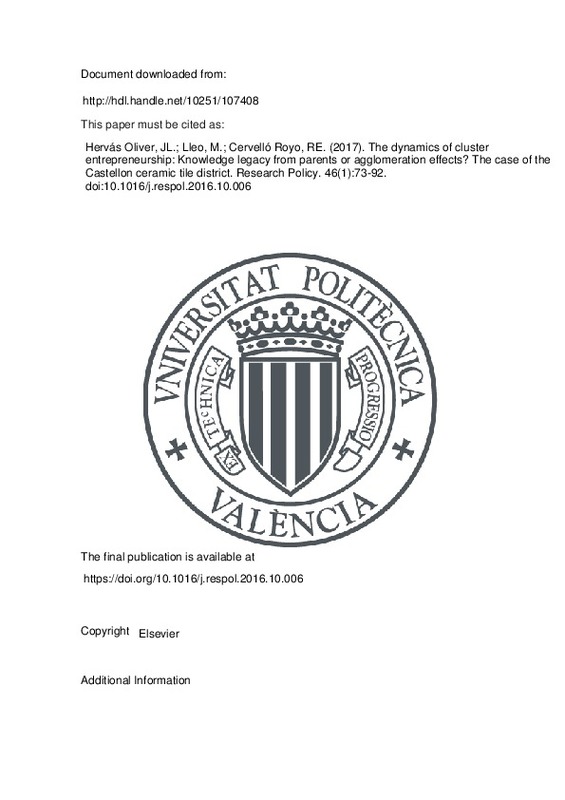JavaScript is disabled for your browser. Some features of this site may not work without it.
Buscar en RiuNet
Listar
Mi cuenta
Estadísticas
Ayuda RiuNet
Admin. UPV
The dynamics of cluster entrepreneurship: Knowledge legacy from parents or agglomeration effects? The case of the Castellon ceramic tile district
Mostrar el registro completo del ítem
Hervás Oliver, JL.; Lleo, M.; Cervelló Royo, RE. (2017). The dynamics of cluster entrepreneurship: Knowledge legacy from parents or agglomeration effects? The case of the Castellon ceramic tile district. Research Policy. 46(1):73-92. https://doi.org/10.1016/j.respol.2016.10.006
Por favor, use este identificador para citar o enlazar este ítem: http://hdl.handle.net/10251/107408
Ficheros en el ítem
Metadatos del ítem
| Título: | The dynamics of cluster entrepreneurship: Knowledge legacy from parents or agglomeration effects? The case of the Castellon ceramic tile district | |
| Autor: | Lleo, María | |
| Entidad UPV: |
|
|
| Fecha difusión: |
|
|
| Resumen: |
[EN] What are the main mechanisms driving the process of industry clustering? There is a tension between two different perspectives as regards explaining entrepreneurship and spatial concentration: the roles played by ...[+]
|
|
| Palabras clave: |
|
|
| Derechos de uso: | Reserva de todos los derechos | |
| Fuente: |
|
|
| DOI: |
|
|
| Editorial: |
|
|
| Versión del editor: | https://doi.org/10.1016/j.respol.2016.10.006 | |
| Código del Proyecto: |
|
|
| Agradecimientos: |
We thank Editor Martin Kenney, David Audretsch and Guido Buenstorf for their fantastic and constructive comments. Jose-Luis Hervas-Oliver also thanks Fiorenza Belussi, Andrea Furlani and Roberto Grandinetti for their ...[+]
|
|
| Tipo: |
|







![[Cerrado]](/themes/UPV/images/candado.png)


